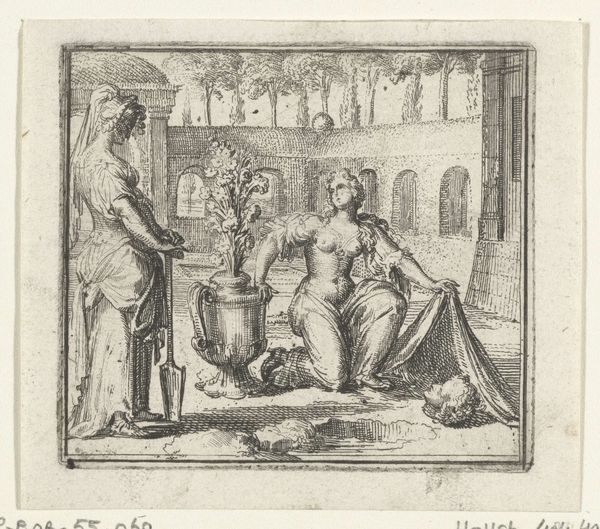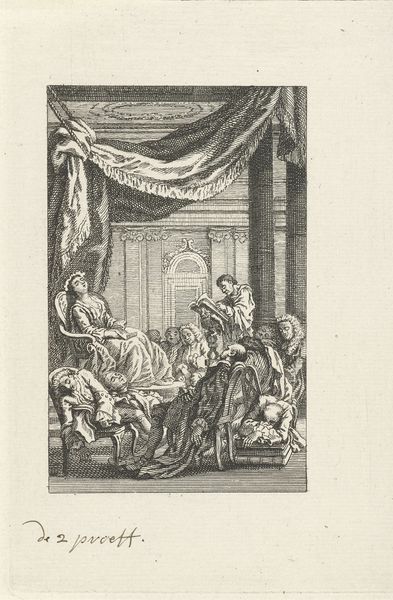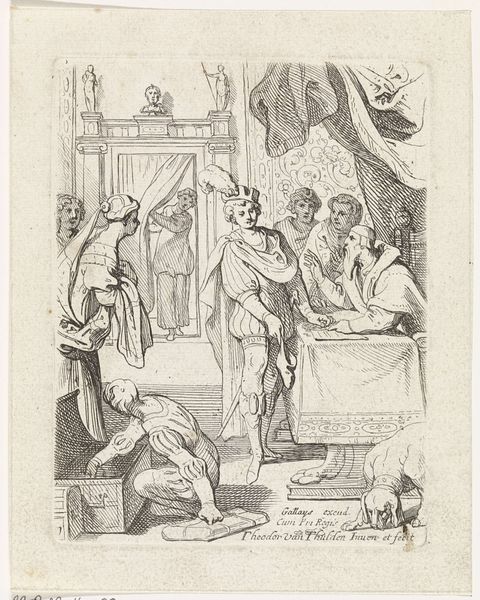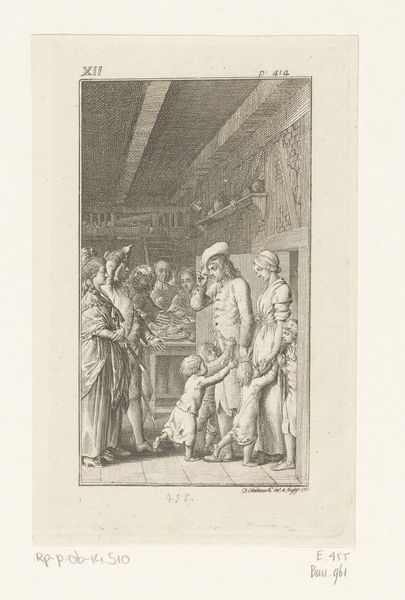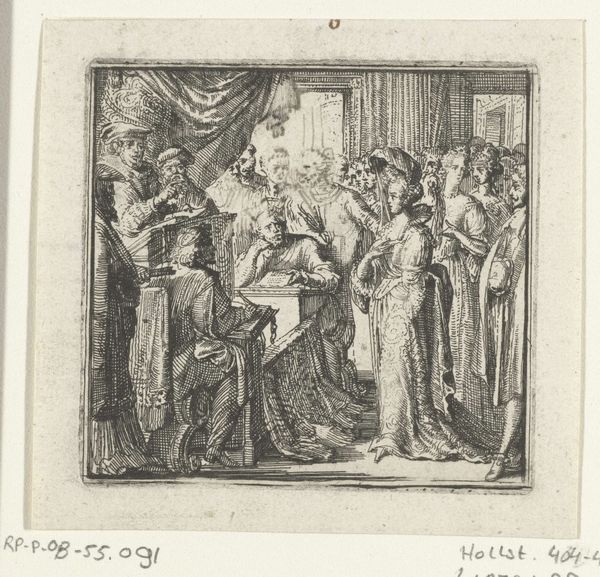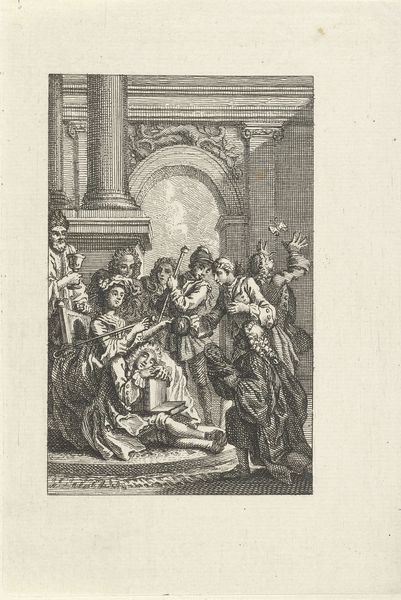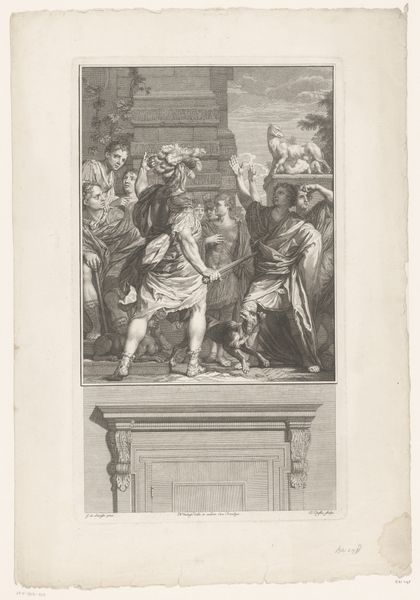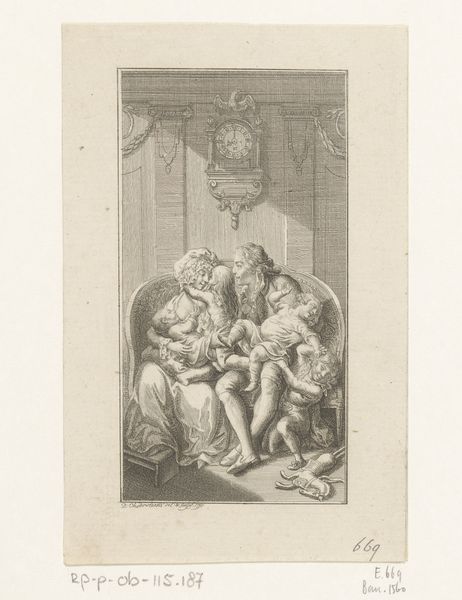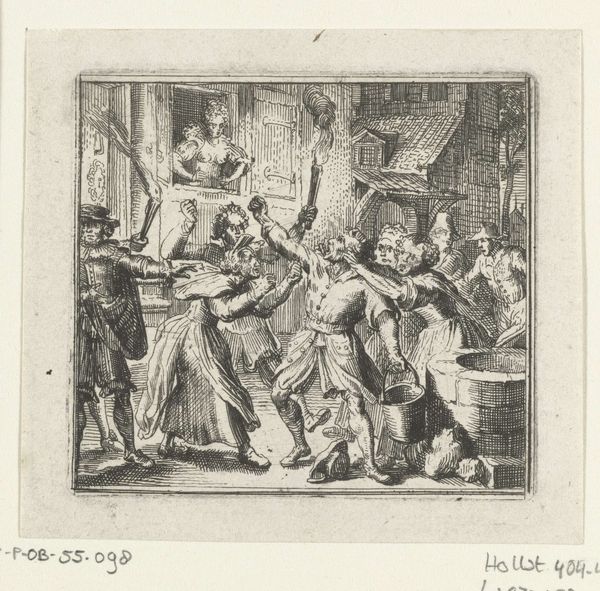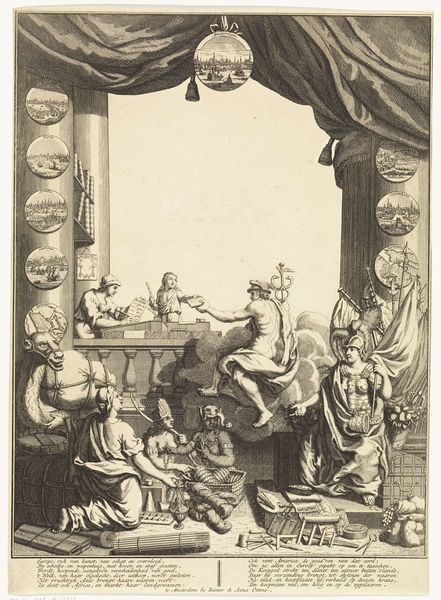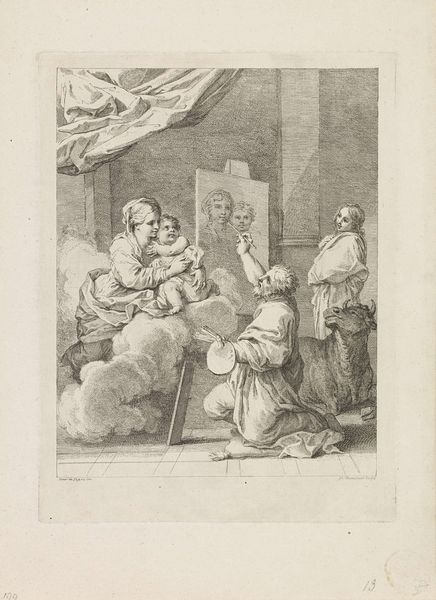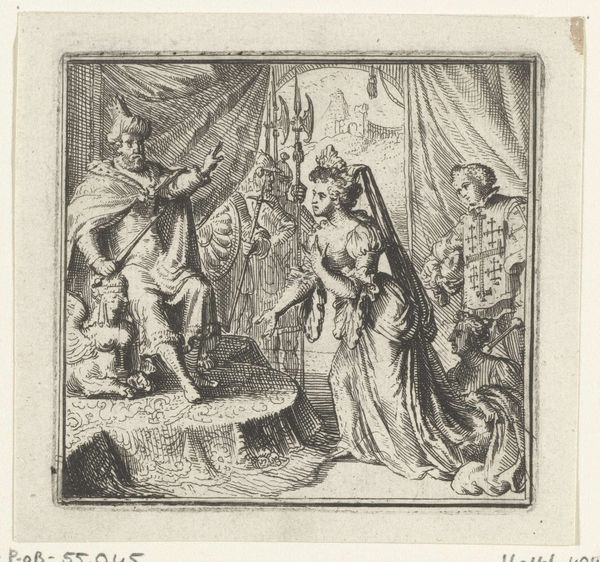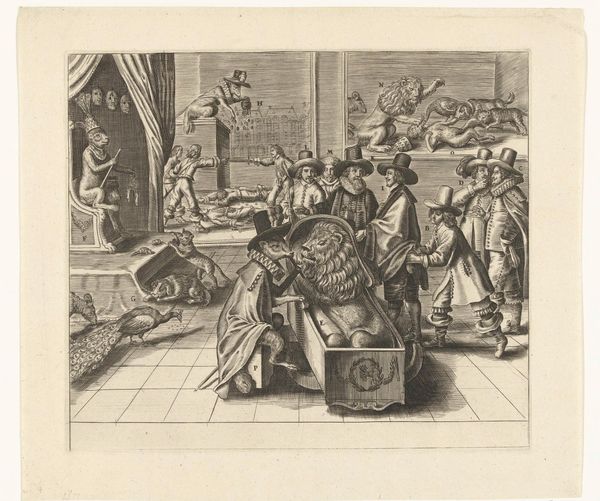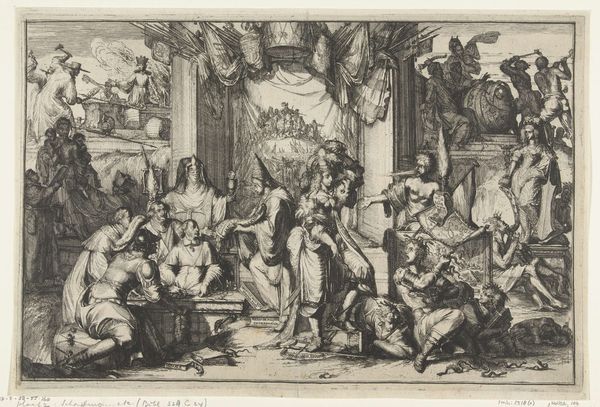
drawing, print, ink, engraving
#
drawing
#
narrative-art
#
baroque
# print
#
pen illustration
#
figuration
#
ink
#
pen-ink sketch
#
genre-painting
#
engraving
Dimensions: height 130 mm, width 103 mm
Copyright: Rijks Museum: Open Domain
Curator: This drawing by Theodoor van Thulden is entitled "The Prodigal Son Squandering His Wealth," created sometime between 1616 and 1669. It is rendered in ink, a pen-ink sketch and engraving on paper. My first impression is how it showcases a cautionary tale wrapped in the lavish details of Baroque sensibilities. Editor: It feels almost voyeuristic. A scene of indulgence, with music, wine, and company, rendered with the kind of detail that almost glamorizes the recklessness it’s meant to critique. I am immediately drawn to how the scene foregrounds gendered performances and patriarchal structures. Curator: Yes, it is important to understand how van Thulden places this morality tale within a social framework. We have to ask ourselves: what would viewers at the time understand? Were they mostly a cautionary lesson for wealthy families? Or something else? The art market and the Church exerted strong pressures on the choice of suitable subject matter. Editor: And weren't prints such as this incredibly instrumental in disseminating moral stories to wider audiences? Consider who had access to them and what these images may have reinforced or subverted in terms of class or social standing. Is it simply a lesson or does it betray an aspirational element for the bourgeois consumer? Look at the placement and posture of the figures in the foreground for example. They invite specific readings relating to societal inequalities, gendered exploitation, and more. Curator: Absolutely. The “Prodigal Son” theme enjoyed incredible popularity throughout the 16th and 17th centuries, as its history and meaning changed throughout socio-religious conflicts. What did this allegory signify to a culture grappling with questions of wealth, piety, and free will? I see that it served to mirror and maybe even question the socio-economic changes within society at the time. Editor: Precisely, and it makes me question how we approach images like this in our contemporary, twenty-first century setting. The artwork, at the end of the day, invites conversations about wealth disparity, accountability, and societal critique. Curator: Well, considering the cultural and religious influences during van Thulden’s time certainly colors my understanding. Editor: And thinking about the implications of disseminating such a potent and resonant narrative allows us to ask better questions about our relationship with money, art, and society.
Comments
No comments
Be the first to comment and join the conversation on the ultimate creative platform.
